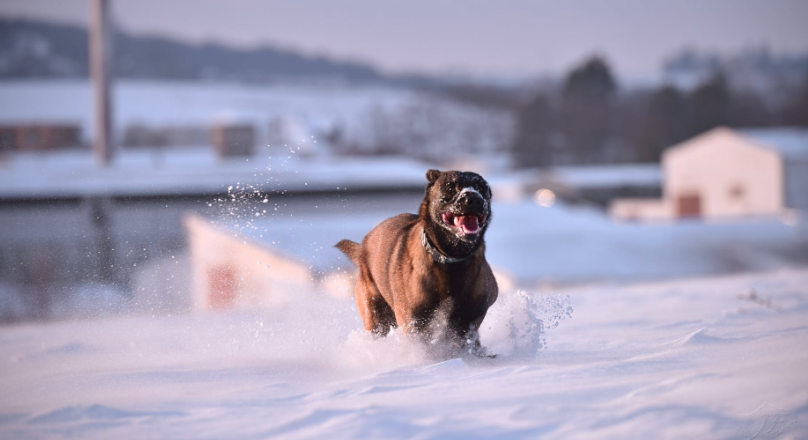
For both people and pets, cold weather can increase joint pain and discomfort. Knowing what to watch for and what to do can help both you and your pet enjoy colder days with less pain.
Signs of Joint Pain in Your Pet
Any of the following signs could indicate that your pet is suffering from joint pain:
- increased irritability
- whimper when touched
- excessive licking of a joint
- noticeable joint inflammation
- loss of muscle
- sleeping more
- slower to rise in the morning
- stiff
- limp
- lagging on walks
- less joy
- reluctance to jump or do stairs
- run has more of a hop to it
- overall, slowing down
**Note: Cats tend to ‘hide’ pain more than dogs. Also, joint pain tends to affect older animals more because they tend to move around less.
Cold Weather and Joints
Cold weather can cause more joint pain than warmer weather due to the fact that the blood flow in the body goes to the major organs of the body in order to keep them warm. This means that less blood flow is going to the limbs and joints.
How to Support Joints in Cold Weather
- Exercise– One of the best ways to help improve your pet’s joints is with exercise. Your pet should be getting outside to exercise everyday. Indoor pets should also be getting exercise everyday. Finding stimulating activities for them to stay active can help the joints a lot. While exercise is critical, it is also important to not overdo it. It may be beneficial to speak with your practitioner about the right activity level for your pet.
- Dress for the Cold– If your pet is older, has short hair, or has health issues; it is helpful to their joints to dress them warmly. This could include wearing a sweater while outside or even indoors on those extra cold days. However, if the sweater becomes damp from being outside, switch your pet into a dry sweater upon coming back inside.
- Balanced Diet– Following a balanced diet for your pet can help their joints to stay strong. To learn more about feeding your pet, check out our previous blogs: Finding the Best Cat Food, Dogs & Cats: Most Common Food Sensitivities, Ancestral Diets of Dogs & Cats: Raw vs. Conventional, Additives to Avoid in Pet Food, Finding the Best Food for Your Dog
- Supplements– It may be necessary in addition to the above to put your pet on a joint supplement. The PetMedella Scan can pinpoint the supplements your pet resonates with.
.
Disclaimer: These services are designed for educational purposes only and are not intended to serve as medical advice. The information provided on this site and in reports should not be used for diagnosing or treating any health problem or disease. It is not a substitute for professional care. If you have or suspect you may have a health problem or need medical attention, you should consult your healthcare provider. PetMedella is not responsible for the interpretation of results by any outside affiliates, practitioners or health coaches using this test.
